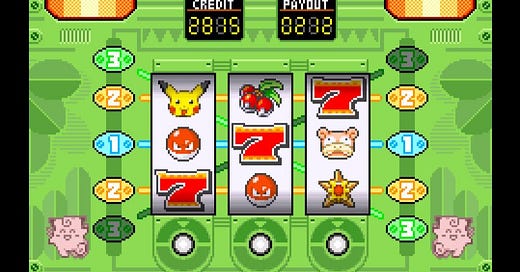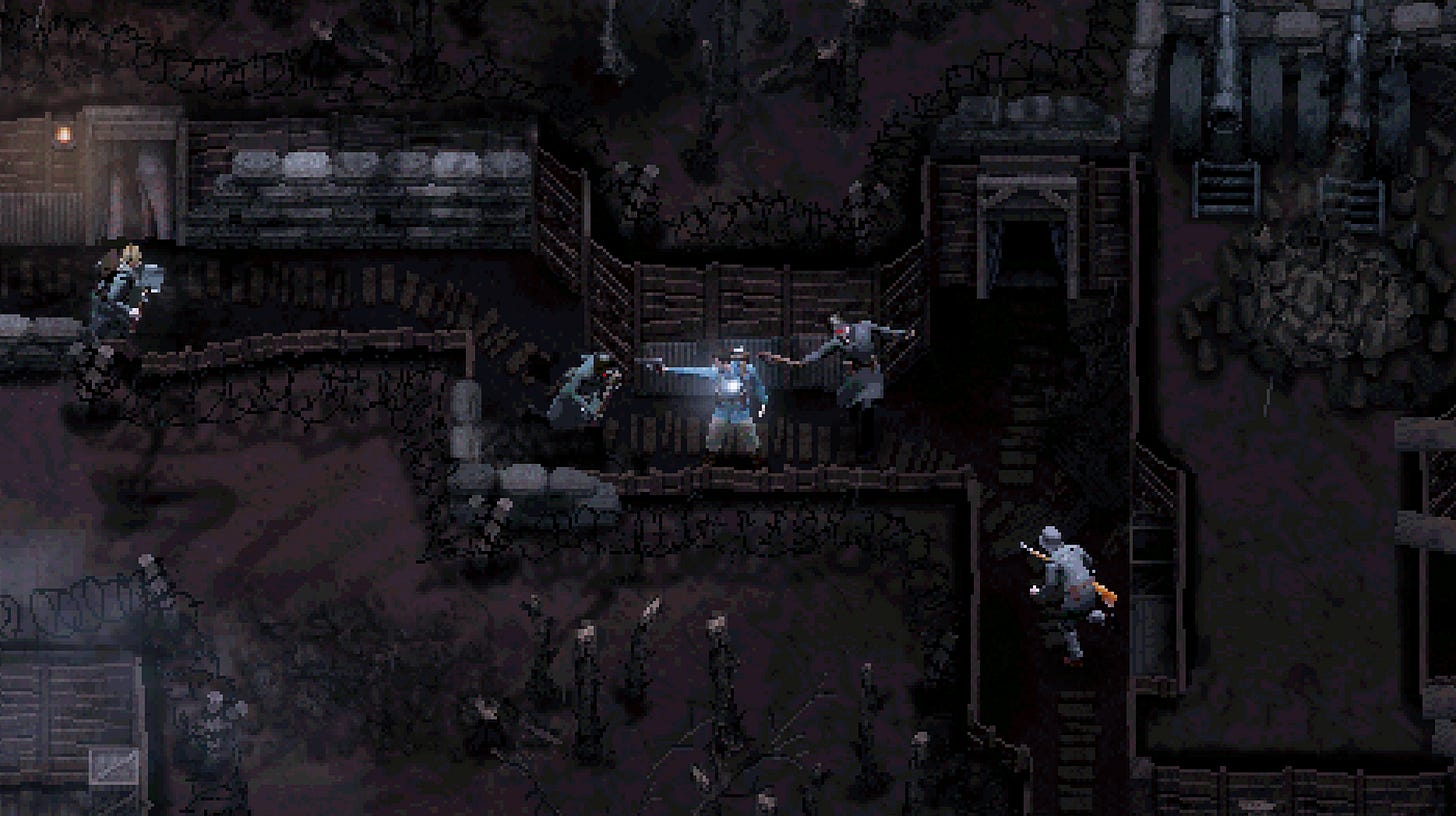Explainer: Australia's new loot box and in-game gambling laws
Potentially coming soon to a jurisdiction near you.
Australia rarely makes global headlines when it comes to video game legislation. And when we do, it's not always for the right reasons. But last week, we became one of the first countries — next to China — to regulate loot boxes and gambling content in games. So what does it all mean? This week we dig behind the headlines to offer some context on this key change that could roll out in some form globally.
What does this change actually mean?
This is the second major change to Australia's game classification system in the past decade — the first being the introduction of an R18+ rating in 2013. It can be broken down into three major changes:
Games that contain loot boxes, or mechanics that trade in-game purchases for a chance at acquiring an in-game item, will automatically be classified M15+ in Australia. This is aimed at deterring the exposure of loot box mechanics to minors.
Games that contain "simulated gambling" will automatically be classified as R18+, prohibiting their sale to those under the age of 18.
This classification only came into effect this week (22 September 2024). So only games classified from now onwards will be immediately affected. Only existing games that undergo significant expansion or change of content will be reclassified, as they need to go through the Classification Board again to release in Australia.
You can find a cheat sheet on it here.
Wait… does this mean the old Pokemon titles are now R18+ games?
Not quite. Yes, they feature gambling, in the form of the poker machines in the Celadon City Game Corner.
The classic Pokémon games, along with many other older games, would need to be reclassified. And for that to happen, they'd need to be rereleased or be expanded upon with downloadable content. Given it's a game that's nearly 30 years old, I think that's unlikely. Games that are about to be released, or that have major add-ons planned, however, will have to note the new regulations.
What's the broader context behind this change?
The classification system for games in Australia has been a political hotbed for many years. From an outsider's perspective, it doesn't seem like anyone in our Federal Government is a gamer, and its treated more as a proxy issue for appealing to parents sensibilities.
This change to tackle loot boxes was first flagged in 2018, with the move to reclassify games with the mechanic announced as early as 2022.
Meanwhile, the change of Australia's classification system to introduce R18+ games took place over the better part of two decades. Early articles place the campaign starting around 2004, but Australia's peak body for the games industry, the Interactive Gaming and Entertainment Association (IGEA), says it was one of their foundational issues when they set up in 1995.
The rules aiming to prohibit gambling content in games come as part of a broader push from the Australian Federal Government to rein in gambling advertisements in the media. According to the Australian Media and Communications Authority, in the 12 months between May 2022 and April 2023, Australian gambling service providers spent $238.63 million on advertising on free-to-air TV (in metro and regional TV markets), metro radio and online.
It's also worth mentioning that problem gambling is rife in Australia. According to the Australian Institute of Family Studies, three-quarters (73%) of Australian adults gambled at least once in the past 12 months and almost two in five (38%) gambled at least weekly. As the ABC notes: Australia has 0.5 per cent of the world's population, but 20 per cent of its poker machines.
How does it stack up globally?
Loot boxes have been in the crosshairs of regulators around the globe. But if this 2023 research from law firm DLA Piper still holds true, Australia may be one of the few countries — next to China — to actually act on them.
China regulated loot boxes back in 2016, which interestingly requires those running them to publish the probability of acquiring an in-game item through such services. In some instances, the chance of acquiring an item through a loot box system can be as low as 1%, but this isn't always disclosed in-game.
As is often the case for regulation, the laws here could serve as a blueprint for other countries looking to act on loot boxes. As you might expect, Australia did not go as far as China in its legislation.
What's the reaction to the change?
Within the industry, largely positive. The IGEA welcomed the change, saying that any classification scheme that better informs purchases is a welcome addition. They, however, also noted the "glacial speed" at which R18+ classification was legislated.
More broadly, the rules are stirring feelings around video games being regulated ahead of other mediums, given that betting ads are still rife on free-to-air TV, amid talk of a broader crackdown.
Will this make a difference?
Possibly? Anecdotally speaking, restrictions on games are fraught, to say the least. A lifetime ago, I used to work as a retail assistant at JB Hi-Fi, a major gaming and electronics retailer in Australia. Kids — typically around 10 years old — would come in and attempt to buy R18+ games, such as Grand Theft Auto 5. We couldn't sell it to them without identification.
But that wouldn't stop their parents from buying it for them. I would even warn them about content in the game, but it didn't deter the purchase. That said, at least it was a clear warning to parents. They understood what they were doing.
My question: Do parents actually understand loot box mechanics enough to care? Back in my retail days, I had parents purchasing the Wii for their kids as a Christmas present when they actually needed to purchase the Wii U. Or purchasing the wrong game due to a similar-sounding title.
This is to say, I wouldn't overestimate the video game knowledge of an average parent. Many may not understand what a loot box system actually is. They will, however, understand in-game gambling references, so that at least will be an effective deterrent. This was 10 years ago though, perhaps it's improved since then.
What do you think of Australia’s new classification rules for loot boxes and gambling content? Let me know in the comments below.
What I'm playing: Conscript
Truth be told, I didn't think I'd find myself really digging Conscript — a survival horror game based in the trenches of World War I. There was something about the look of it, maybe the art style? But on the back of the game being up for six separate awards in the next fortnight at the Australian Game Development Awards, I gave it a crack.
Wow, I'm glad I pushed through my hesitation. Not only is this game an ode to classic Resident Evil mechanics, but it pushes survival horror in a brand new and interesting direction.
For context, this style of game is typically confined to supernatural situations. Resident Evil involves a mansion full of zombies. Silent Hill is a town full of monsters. The same goes for The Evil Within, set in the minds of serial killers. The genre — known for its puzzle roots — has also leaned very heavily towards action in previous years — to the dismay of many of its fans.
Conscript is a return to form. Ammo is scarce, decisions you make matter, enemies are plentiful and don't die easily. And when you do kill them, unless you burn the bodies, they bait out rats that also attack you and spread disease. The sense of dread you feel playing a Resident Evil game is here and in abundance.
In Conscript, you play as a drafted French soldier defending the trenches near Verdun in World War I. Everyone around you is essentially being sent to their death, and those that refuse are instead being killed by their commanding officers. Never mind the supernatural, this is a real-life horrifying situation. You're in a platoon with your brother, who is injured early in the game and then goes missing. As you help the French overcome their German adversaries, you aim to track down your missing brother.
The trench is in disarray. Tunnels are blocked, doors are locked, and it's overrun with the enemy. It's your job to navigate this maze, while doing your best to either eliminate or avoid German soldiers. Perhaps the real kicker here, and what notches up the sense of dread, is while you are just doing your best to survive, your commanders are trying to win a war. Seemingly out of nowhere, and regardless of how many resources you have on hand, you'll be asked at various points in the game to defend the front line. These serve as boss battles of sorts, where waves of enemies come at you. Cleverly, you can actually abandon your post during these encounters to save resources, but it affects the ending.
Anyone who has played Resident Evil here will know what's going on. In fact, I'd argue Conscript will be a touch confusing for those who have not tried a Resident Evil game in the past, given its tutorials are largely conveyed through notes and diary entries on the map. Luckily, while it is a recently-launched indie game, there are guides online (both video and written) to help you through it. Even as a survival horror veteran, I'd strongly advise enabling checkpoints and not capping on saves. Even on its standard difficulty, it's a tough game, and even with checkpoints — which only trigger once when you hit them — you'll find yourself dying and repeating parts of the game.
I haven't even gotten to the most incredible part. This 15+ hour game was made by a solo developer, Jordan Mochi. It's his first foray into game design, and he has no prior experience in development. He's just a fan of classic Resident Evil. The complexity of the map and puzzles, the mechanics are top-notch and in some ways are better than the source material. I'm 12 hours in, at Chapter Four, and the game keeps surprising me. It takes players who have prior survival horror experience and subverts their expectations in the most unusual ways.
You know what else gives me dread? New Resident Evil game announcements. As a fan of the series, I'm always left wondering whether this is going to be another action game with a splash of horror. Conscript has me excited again for the future of survival horror as a genre and the direction it can be taken.
Some may also approach this as a historical war-based game. Call of Duty may have a monopoly on that genre, but it tends to glorify conflict. It just doesn't capture the fear and insanity of war. And when it does, it quickly cuts to another gung-ho set piece riddled with explosions and cool visual effects. Don't mind the trauma, isn't this sequence cool?
For an indie, solo-developed game, Conscript pushes both rusted-on genres forward. Let's hope the broader industry takes notice of this title. And if you are into survival horror, it's worth your attention too.
Worth playing if you like: The early Resident Evil games, The Evil Within, Silent Hill.
Available on: Most platforms. PlayStation 5, Nintendo Switch, PlayStation 4, Xbox One, Steam, Epic Games Store.
Thanks for reading this edition of Infinite Lives.
If you are enjoying this newsletter, help me grow its reach by sharing Infinite Lives with your friends or networks. Seeing one new subscriber a week not only keeps me motivated to keep going but to produce better stories too!






Conscript sounds like fun, but I'm not sure I have spare diapers...
Thunder from Down Under!